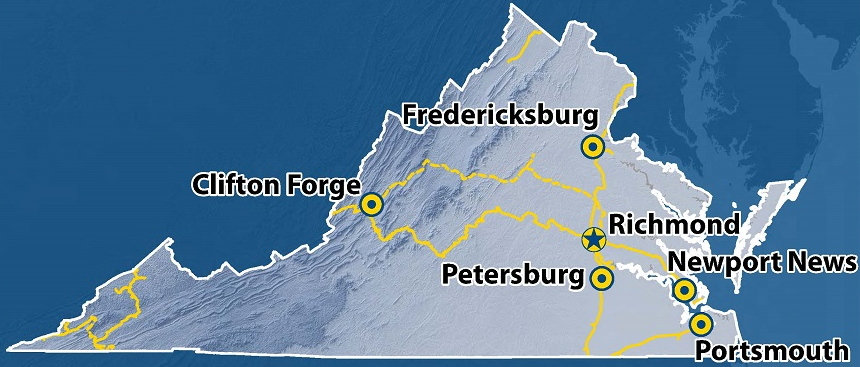
the modern CSX railroad operates major rail yards at Clifton Forge, Petersburg, Newport News, and Richmond, plus terminals to transfer cargo (including ethanol) at Fredericksburg, Richmond, and Portsmouth
Source: CSX, Virginia

the modern CSX railroad operates major rail yards at Clifton Forge, Petersburg, Newport News, and Richmond, plus terminals to transfer cargo (including ethanol) at Fredericksburg, Richmond, and Portsmouth
Source: CSX, Virginia
Today, CSX is the Class 1 railroad component of CSX Transportation (CSXT).
The oldest Virginia-based component of CSX is the Richmond, Fredericksburg, and Potomac (RF&P) Railroad, chartered in 1834. The second-oldest component of today's CSX railroad is the Louisa Railroad. That line began in 1836, with its main business being the transport of farm products from farms in the Piedmont to Richmond. Starting in 1849, it became the Virginia Central.
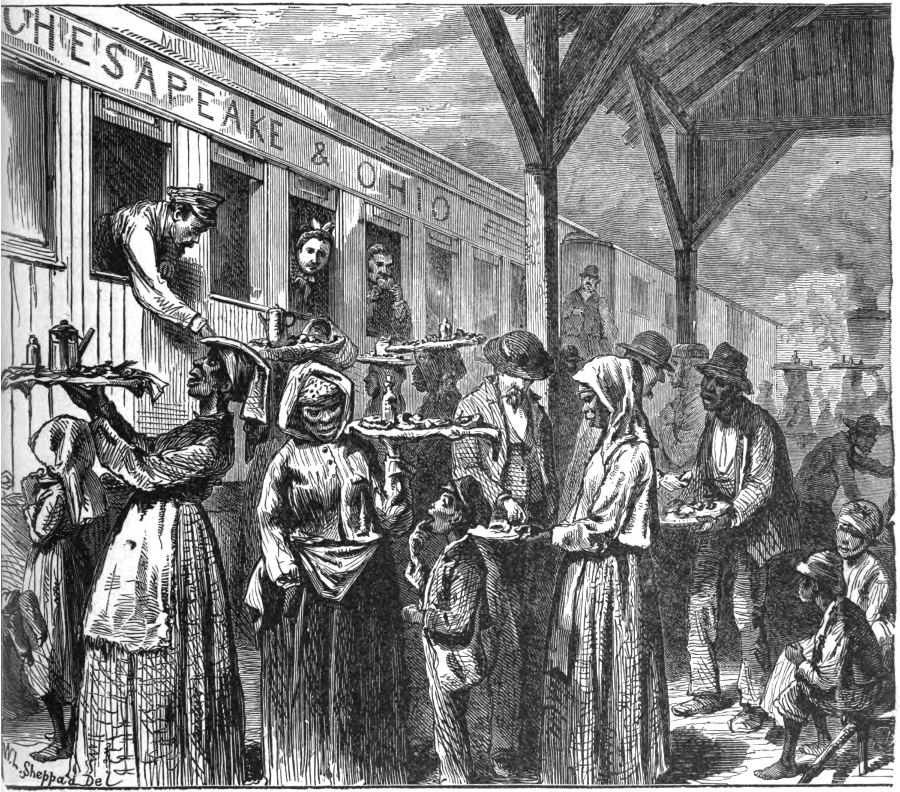
the Chesapeake and Ohio trains stopped in Gordonsville, where passengers bought fried chicken
Source: "The Chesapeake & Ohio Railway Directory, Containing an Illustrated History and Description of the Road," Gordonsville - Local Commissary Department (p.224)
During the Civil War, the rail line was heavily damaged. In 1869, Collis P. Huntington acquired the Virginia Central, and it was renamed the Chesapeake and Ohio (C&O) Railway Company in 1878.
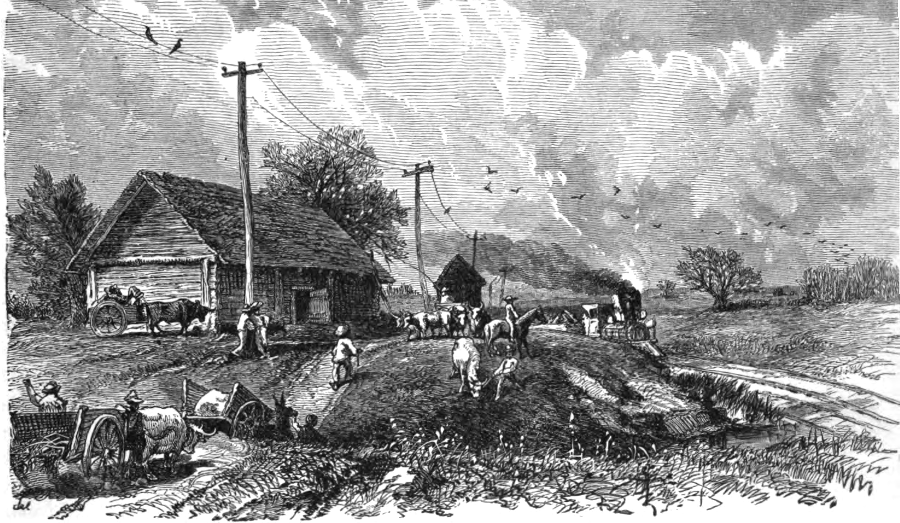
in 1881 the C&O's Wickham Station in Hanover County served the Hickory Hill plantation of Williams Carter Wickham, a high official of the railroad
Source: "The Chesapeake & Ohio Railway Directory, Containing an Illustrated History and Description of the Road," Wickham's Station (p.216)
It remained the Chesapeake and Ohio until 1973. A merger with the Baltimore and Ohio (B&O) Railroad resulted in a name change to Chessie System Railroads. The Seaboard System was added in 1980, and that expansion led to the final name of CSX. The modern railroad is based in Jacksonville, Florida, and operates on 21,000 miles of track.1

the Chesapeake and Ohio advertised its route through the mountains in 1881
Source: The Chesapeake & Ohio Railway Directory, Containing an Illustrated History and Description of the Road (p.99)
Before the Civil War, there were plans to extend the Virginia Central west to the coal fields of West Virginia via Harrisonburg. The railroad would cross the Blue Ridge at Thornton Gap, where Route 211 today connects Sperryville with Luray in the Shenandoah Valley. The same gap was the target for the Royal Land Company's plans in 1876 to extend the Potomac, Fredericksburg & Piedmont (PF&P) across the Blue Ridge.2
In the end, the Virginia Central crossed the Blue Ridge at Afton Gap, where Claudius Crozet built the only tunnel in Virginia to cross the mountains. Gordonsville became famous for the chicken prepared by local residents and sold to passengers when trains stopped there.
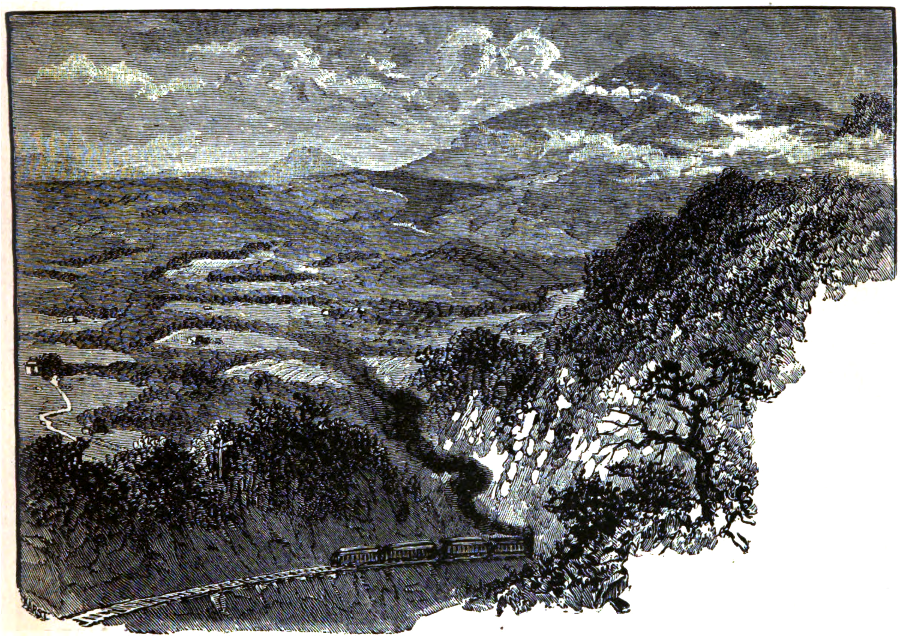
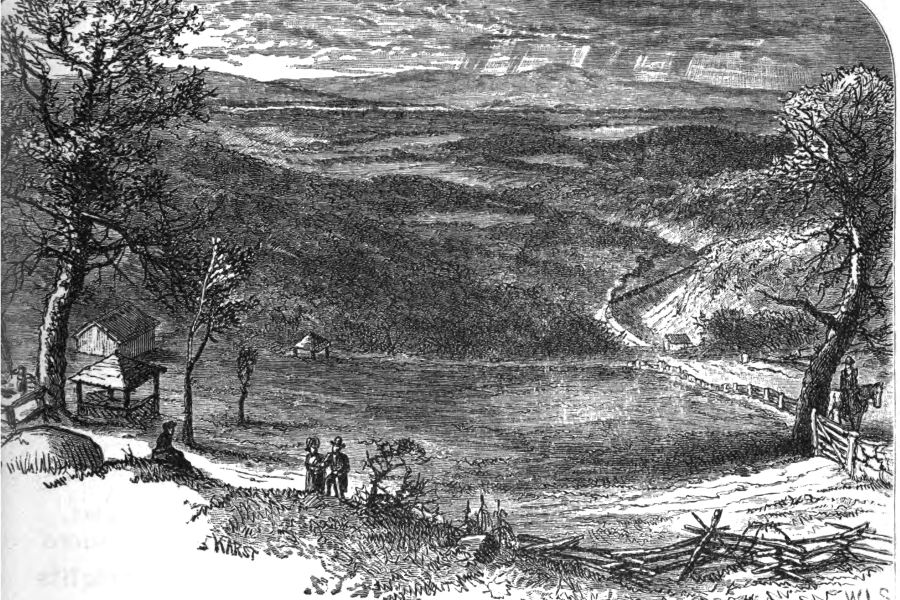
the Virginia Central used a tunnel carved through the Blue Ridge by Claudius Crozet, and financed by the state of Virginia
Source: "The Chesapeake & Ohio Railway Directory, Containing an Illustrated History and Description of the Road," Blue Ridge Tunnel, East Entrance - Opened to Travel in 1858 (p.262) and View from Rockbridge Gap of West Entrance of Blue Ridge Tunnel (p.268)
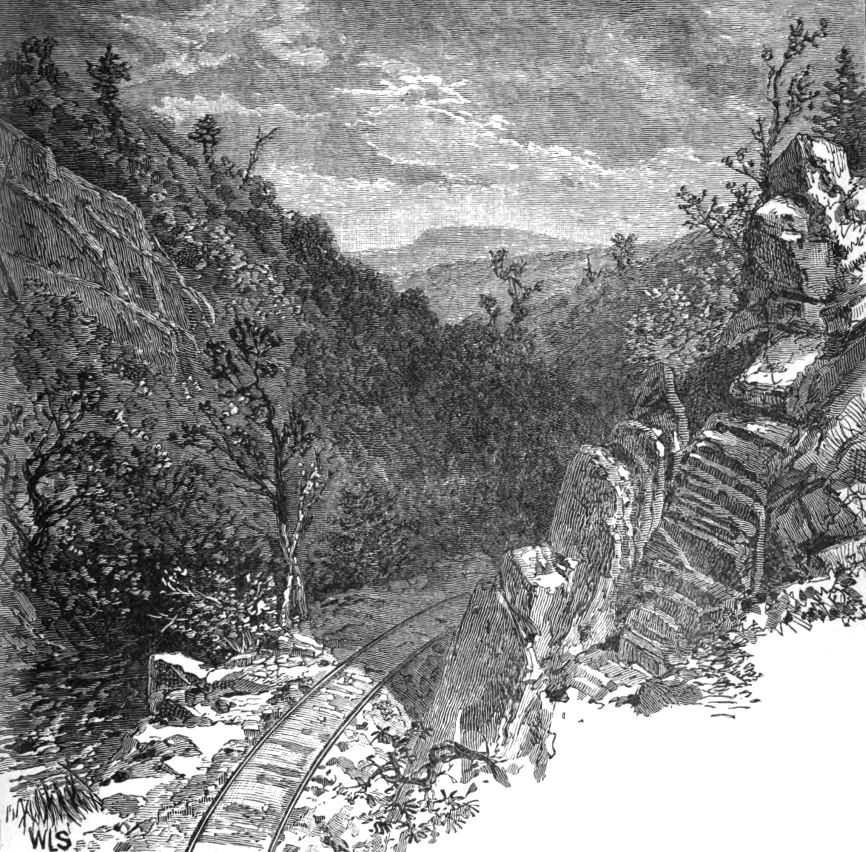
west of Staunton, the Virginia Central crossed Mill Mountain via Panther Gap
Source: "The Chesapeake & Ohio Railway Directory, Containing an Illustrated History and Description of the Road," Panther Gap - Looking East (p.316)
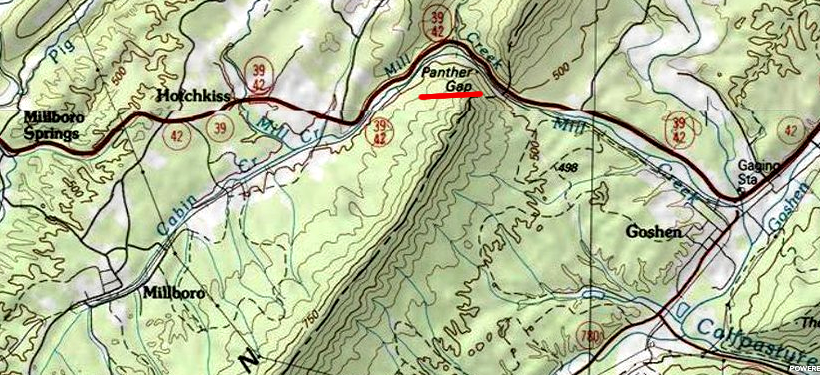
the CSX still crosses Mill Mountain at Panther Gap
Source: ESRI, ArcGIS Online
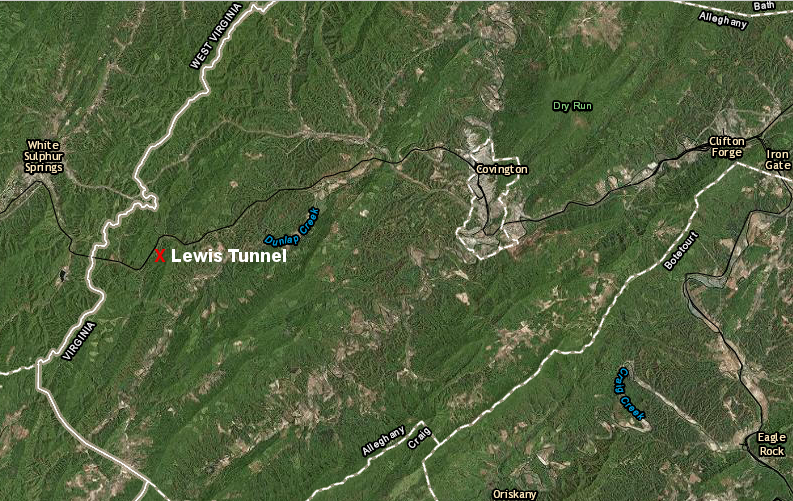
the Lewis Tunnel was constructed in Alleghany County to help the C&O Railroad cross the watershed divide between the headwaters of the James River in Virginia and the Greenbrier River in West Virginia
Source: ESRI, ArcGIS Online
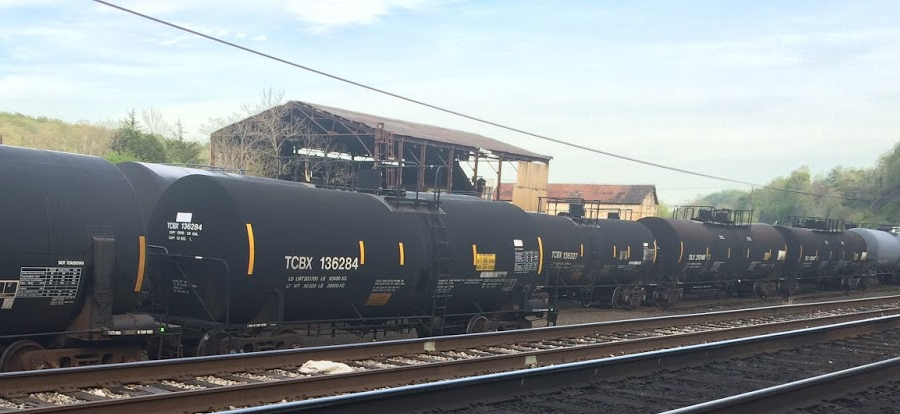
Appalachian Tank Car Services operates a repair business on the CSX railroad upstream of Lynchburg
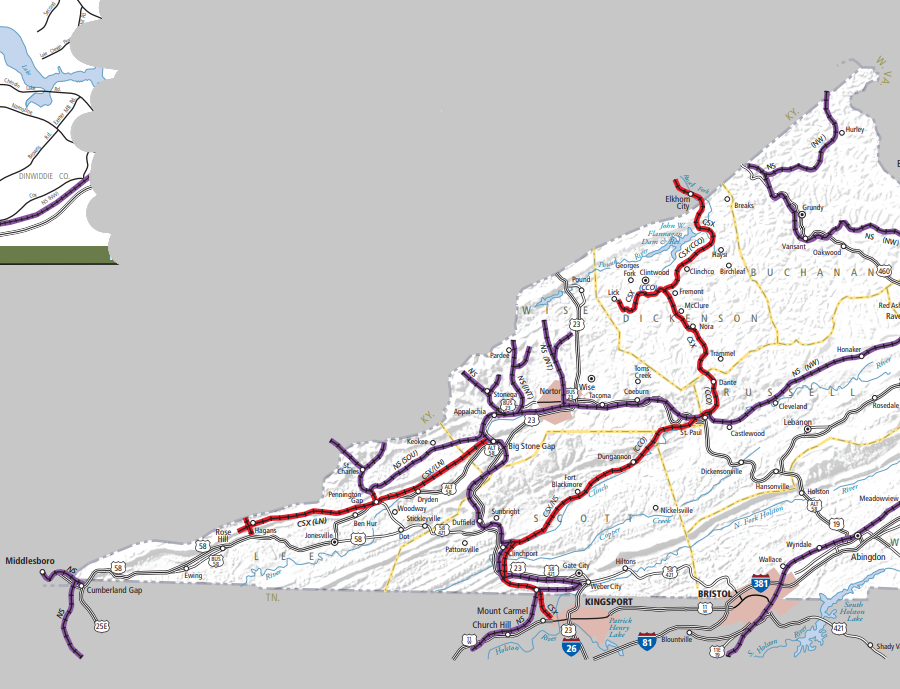
CSX (red line) uses routes first built by the Louisville and Nashville and the Clinchfield railroads to carry West Virginia coal to South Carolina and Georgia
Source: Virginia Rail Map
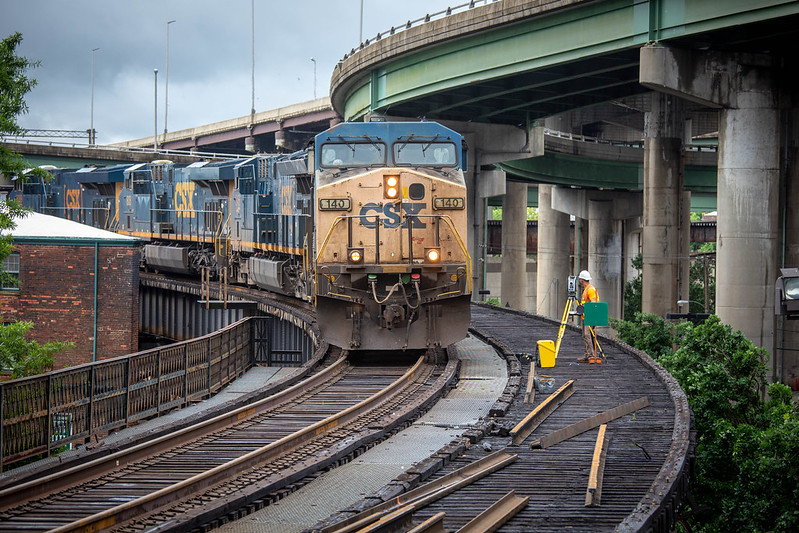
CSX freight train coming through Richmond at Main Street Station
Source: Virginia Department of Transportation, Main Street Station

after 9/11, there were proposals to build a bypass for CSX freight trains to keep them out of the District of Columbia
Source: National Capital Planning Commission, Freight Railroad Realignment Feasibility Study (April 2007)
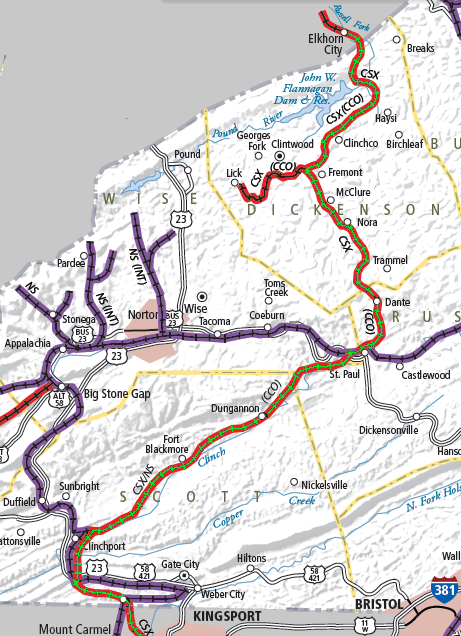
each December, CSX operates the Santa Train and distributes free toys to children in Appalachian towns between Elkhorn City, Kentucky to Kingsport, Tennessee (see route with green center)
Source: Virginia Department of Rail and Public Transportation, Virginia Railroad Map (2012)
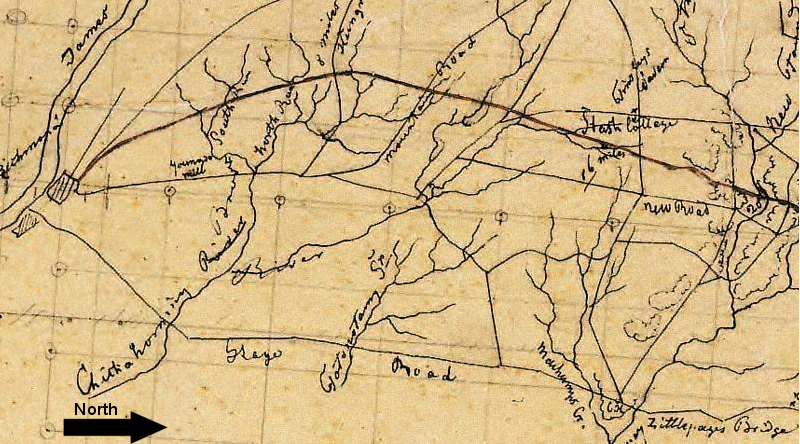
1835 plans for the Richmond, Fredericksburg and Potomac Railroad
Source: Library of Virginia, Bureau of Public Works Entry 532, Map #2
1. "Map Collection Includes Chesapeake and Ohio Railway Materials," Library of Virginia e-newsletter, November 11, 2009, http://www.lva.virginia.gov/news/newsletter/stories/2009_11-november.asp; "Company Overview," CSX, https://www.csx.com/index.cfm/about-us/company-overview/ (last checked April 20, 2020)
2. The Royal Land Com'y of Virginia, Clemmitt & Jones, 1877, pp.2-3, p.15, pp.17-18, https://books.google.com/books?id=9K9AAAAAYAAJ (last checked February 2, 2017)
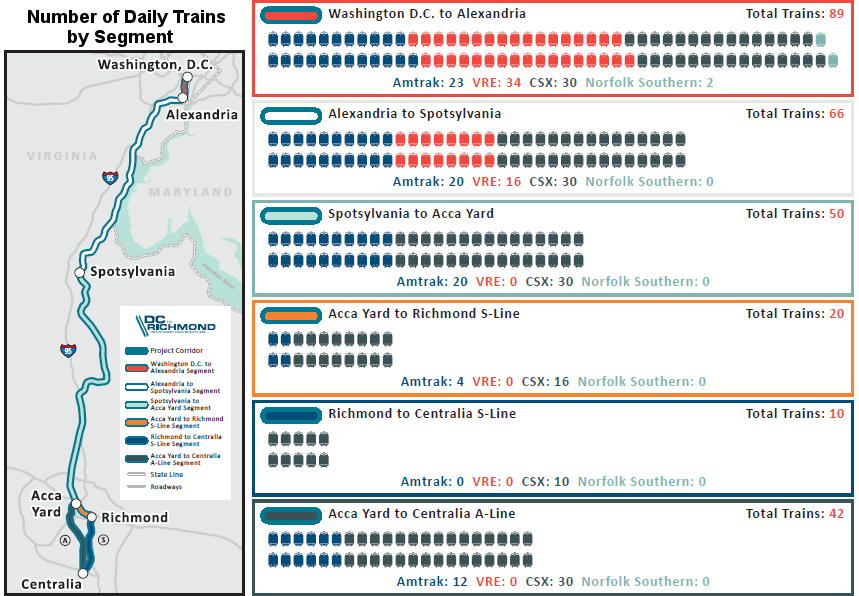
CSX owns the tracks between Washington DC's L'Enfant Plaza and Richmond, so Amtrak and Norfolk Southern must lease rights for their trains to use those tracks
Source: Virginia Department of Rail and Public Transportation, D.C. to Richmond Southeast High Speed Rail - Purpose and Need Statement, Figure 5: Number of Daily Trains by Segment (p.20)
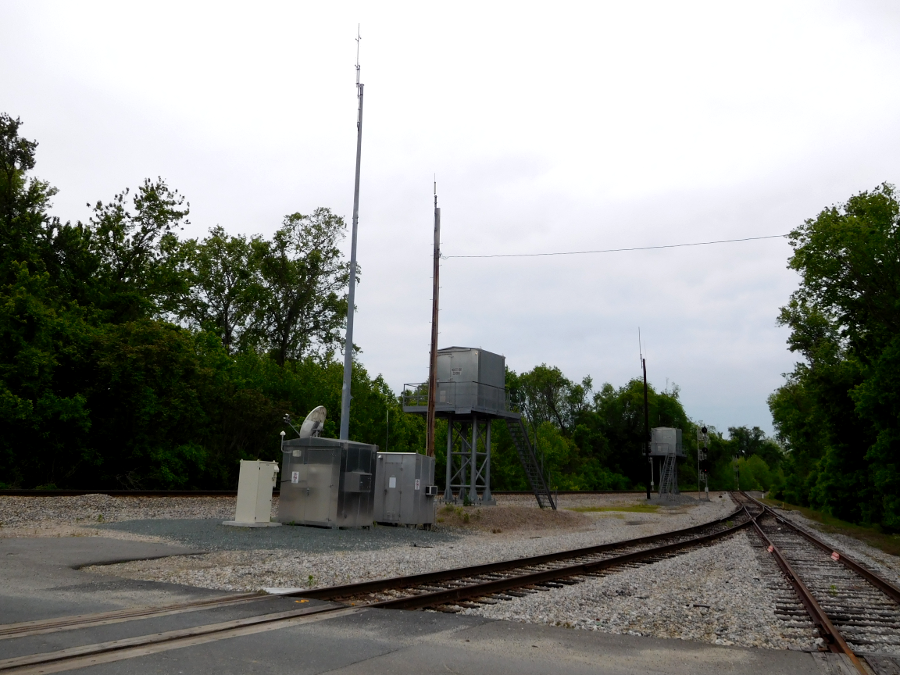
signals on CSX at Columbia (Fluvanna County)